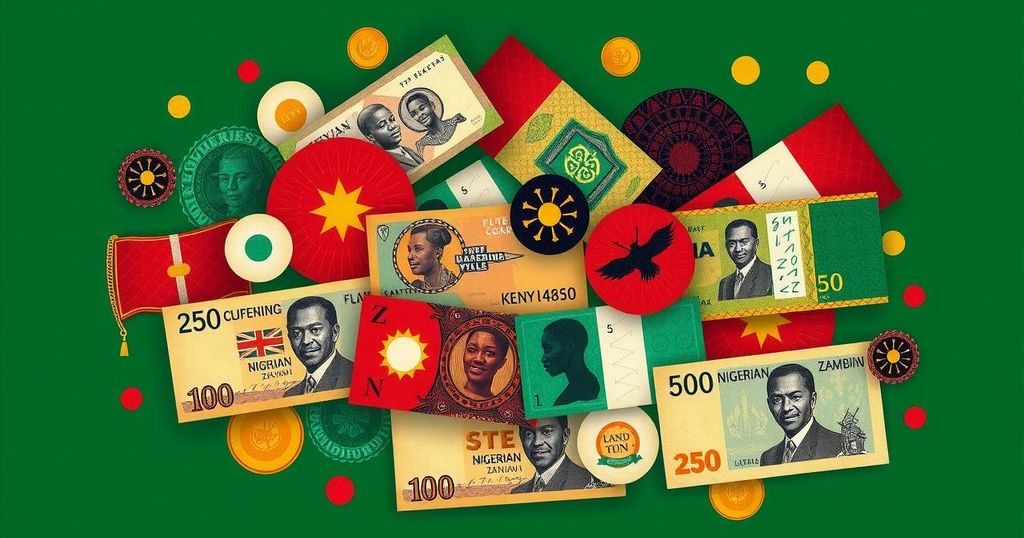The currencies of Kenya, Nigeria, and Zambia are projected to weaken, while Ghana’s cedi remains stable, with potential strength for Uganda’s shilling due to upcoming tax payments.
The currencies of Kenya, Nigeria, and Zambia are projected to face downward pressure in the upcoming week, while Ghana’s cedi is expected to remain stable, with Uganda potentially gaining against the U.S. dollar. This analysis reflects insights from various traders in the foreign exchange market.
In Kenya, the shilling is anticipated to weaken due to banks paying dividends from the previous year. Current quotations place the shilling at 129.30/129.50 to the U.S. dollar, compared to 129.00/129.40 last week. One trader remarked that the demand for dollars from offshore entities would likely contribute to further weakening unless the central bank intervenes.
Concerning Nigeria, the naira is expected to decline in both official and parallel markets as the demand for foreign exchange surpasses central bank supply. Intraday trading indicates a naira quote of around 1,550 to the dollar, compared to 1,520 naira from the prior week. Traders noted that despite central bank efforts, increased dollar demand has resulted in a widening gap with the black market rates.
Ghana’s cedi is projected to remain stable, bolstered by support from the central bank. As of Thursday, the cedi maintains a value of 15.45 to the dollar, unchanged from last week. Traders, including Chris Nettey from Stanbic Bank Ghana, expect this stability to continue, attributing it to balanced demand and supply dynamics.
In Uganda, the shilling is forecast to strengthen as companies prepare for mid-month tax payments. Current trading rates reveal the shilling at 3,662/3,672 to the dollar. A trader anticipates a decrease in dollar demand amid tax obligations being met, allowing the local currency to gain some strength, with expectations for trading between 3,630 and 3,660 against the dollar.
Zambia’s kwacha is expected to weaken due to rising demand for hard currency against limited supply. The kwacha was quoted at 28.58 on Thursday, a slight decline from 28.70 last week. As indicated by Access Bank, the scarcity of foreign currency due to increased import demand, specifically for food and electricity, has contributed to the currency’s depreciation.
In summary, the currencies of Kenya, Nigeria, and Zambia face considerable downward pressure due to various market dynamics, while Ghana’s cedi shows resilience amid central bank support, and Uganda’s shilling may appreciate due to tax obligations. This suggests a complex landscape for foreign exchange in the region, with divergent trends influencing different currencies.
Original Source: www.tradingview.com




